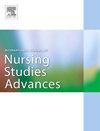检查rai间沟通协作行动计划识别感官挑战个体的能力:一项回顾性队列研究
IF 3.1
Q1 NURSING
International Journal of Nursing Studies Advances
Pub Date : 2025-09-13
DOI:10.1016/j.ijnsa.2025.100424
引用次数: 0
摘要
当前的研究评估了rai间沟通协作行动计划(CAP)的表现,以标记可能从干预中受益的感觉障碍个体。调查人员还通过探索三个独特的案例研究,研究了CAP如何帮助促进以客户为中心的护理计划和服务提供。方法:本回顾性队列研究利用加拿大居民家庭护理评估工具(RAI-HC)收集的二手数据。样本包括在2008年至2020年间完成两次RAI-HC评估的65岁及以上的个体(n=508,856)。在时间1,个体根据他们的CAP触发水平被分为三个相互排斥的组:未触发,为促进改进而触发,或为防止下降而触发。对这三组进行人口统计学特征、感觉障碍、认知挑战和疾病诊断的比较。从时间1到时间2的触发级别之间的转换使用Sankey图进行分析。研究了三个案例研究,以确定为什么有人可能在时间2不再触发CAP的原因。结果个体入组至最近一次评估的中位时间为21个月(标准差为24.7个月)。大多数人没有在时间1触发CAP (77.7%, n=395,309),而9.5% (n=48,263)的触发是为了促进改善,12.5% (n=65,284)的触发是为了防止衰退。对于每一种感觉障碍,大多数个体更有可能落入触发促进改善组。沟通CAP在标记有感觉障碍的个体时是稳健的,因为这些个体更有可能属于触发促进改进组。这三个案例研究强调了评估沟通的所有方面(例如,认知和感官挑战,接受和表达沟通)的重要性,因为它们都是考虑决策支持工具和下一步的必要组成部分。本文章由计算机程序翻译,如有差异,请以英文原文为准。
Examining the ability of the interRAI communication collaborative action plan to identify individuals with sensory challenges: A retrospective cohort study
Background
The current study evaluated the performance of the interRAI communication collaborative action plan (CAP) to flag individuals with sensory impairments who could benefit from intervention. Investigators also examined how the CAP can help facilitate client-centered care planning and service delivery by exploring three unique case studies.
Method
This retrospective cohort study utilized secondary data collected using the Resident Assessment Instrument for Home Care (RAI-HC) across Canada. The sample included individuals aged 65 years or older who had two RAI-HC assessments completed between 2008 and 2020 (n=508,856). At time 1, individuals were categorized into three mutually exclusive groups based on their CAP triggering level: not triggered, triggered to facilitate improvement, or triggered to prevent decline. The three groups were compared across demographic characteristics, sensory impairments, cognitive challenges, and disease diagnoses. Transitions between triggering levels from time 1 and time 2 were analyzed using Sankey diagrams. Three case studies were examined to identify the reasons why someone may no longer trigger on the CAP at time 2.
Results
The median time between an individual’s intake and most recent assessment was 21 months (standard deviation=24.7 months). The majority of individuals did not trigger on the CAP at time 1 (77.7 %; n=395,309), while 9.5 % (n=48,263) triggered to facilitate improvement and 12.5 % (n=65,284) triggered to prevent decline. For each of the sensory impairments, the majority of individuals were more likely to fall into the triggered to facilitate improvement group.
Conclusions
The communication CAP was robust in flagging individuals with sensory impairments as these individuals are more likely to fall into the triggered to facilitate improvement group. The three case studies highlight the importance of assessing all aspects of communication (e.g., cognitive, and sensory challenges, receptive and expressive communication), as they are all necessary components when considering decision-support tools and next steps.
求助全文
通过发布文献求助,成功后即可免费获取论文全文。
去求助
来源期刊

International Journal of Nursing Studies Advances
Nursing-General Nursing
CiteScore
5.80
自引率
0.00%
发文量
45
审稿时长
81 days
 求助内容:
求助内容: 应助结果提醒方式:
应助结果提醒方式:


